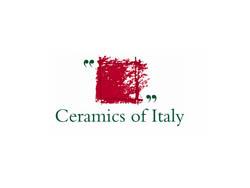Ceramics of Italy Announces 2020 Tile Trends
New York, NY, May 13, 2020-Following review of hundreds of introductions at Cersaie and the virtual Coverings event, Ceramics of Italy has announced the following ceramic tile trends for 2020.
Biophilia: Biophilic design is scientifically proven to reduce stress, improve cognitive function, and boost mood and creativity. Tiles mimicking nature can help enhance a person’s perception of space, which is a good reason for architects and designers to consider incorporating them into their next project. Italian manufacturers offer a variety of plant-like tile designs from barely-there leaf prints, grassy motifs, and palm designs to pixelated florals, pop-art versions, and abstract gardens.
Blue: While there are many classic blue options, advanced technology allows manufacturers to recreate nearly every shade of blue under the sun. Designers can make a bold statement using solid bright blue tile, energize a room using blue marble with contrasting veining, and create a head-turning floor with the look of rare blue minerals like Blue Sodalite. Turquoise and teal can also be used to conjure images of the Mediterranean, especially when paired with hexagonal formats and whitewashed walls. On the other end of the chroma spectrum, greyish blues have a more subdued look and tie back to a sense of calm and serenity.
Geometric Stone: Geometric stone has been used since ancient times and is ubiquitous in Italy, from terrazzo sidewalks to the floors of historic churches like the Florence Cathedral. Thanks to modern technology, Italian tile producers can replicate the look of Palladiana Terrazzo or inlaid stone without the headache of cutting, sorting, and installing an assortment of small pieces.
Material Stories: With so many products available on the market, it’s not enough to have a beautiful, high-quality tile; it also needs to tell a good story. Luckily, manufacturers offer striking photography and imaginative narratives that conjure a specific place or mood – from rustic tiles reminiscent of a historic estate in Tuscany to collections that evoke the colors of the desert and the charm of Middle Eastern kasbahs. Tile producers also scour the world to find material inspiration for their collections, whether it’s a rare and precious marble or a limestone only found in a small village in northern Italy.Geometric shapes can also be found in a variety of mosaic options, from linear bricks to rhomboids that look like micromosaics, and metallic inserts on marble designs.
Oxides: Oxidized metal has been a part of architecture and design for over a century, which you can see in various patina’d roofs of municipal buildings all over the country. These tile collections reveal beautiful material and color stories, minus the actual chemical reactions - from large format tiles with a beautiful green patina and ceramic mosaics with an imaginative oxidized blue, to tiles that look like Corten or oxidized pewter for a modernized industrial look.
Texture: Texture is an enduring trend, which evolves in new ways every year as manufacturers continue to push the boundaries of tile beyond the second dimension. There are many different ways to create tactile interest on the surface, from linear reliefs that create a sense of movement to ceramic tile reminiscent of wood paneling from the Victorian era. Some manufacturers take an artisanal approach, using glazes or plastic casts to create an imperfect surface and hand-crafted effect. Even tiles with a flat surface can give the appearance of depth and texture by using a tromp l’oeil effect, one of the oldest tricks in the book.
Related Topics:Coverings, CERAMICS OF ITALY, CERSAIE
